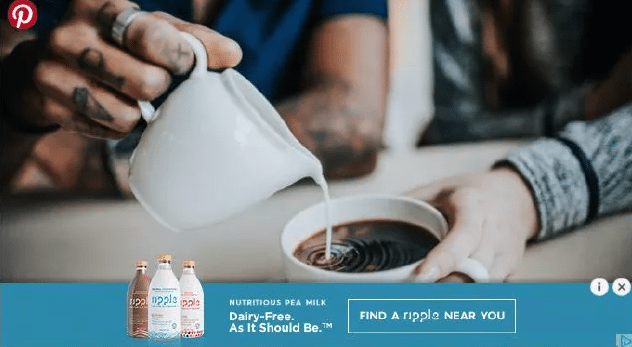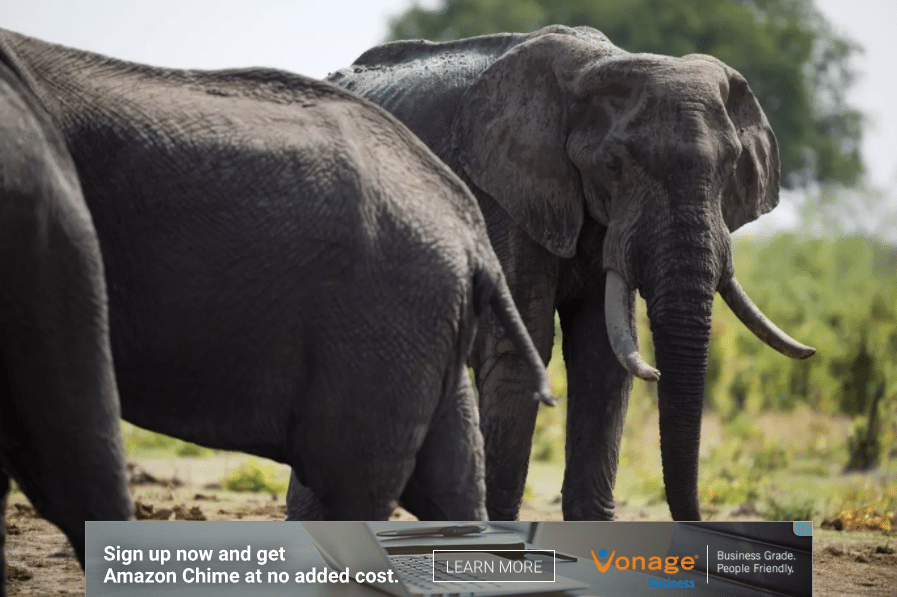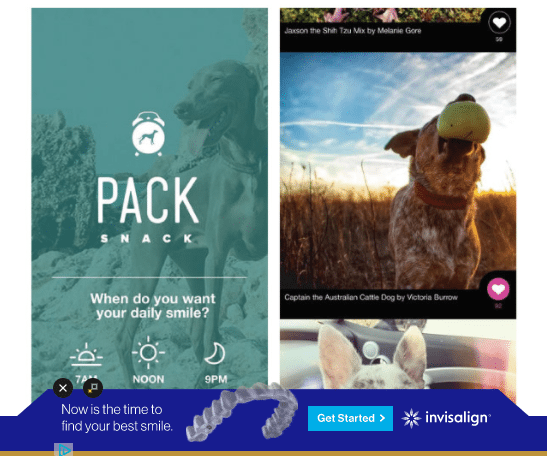As the digital marketing landscape evolves, it’s become evident that including images in your marketing strategy is the only way to succeed in the digital marketing world. Don’t believe it? Consider these numbers:
- From 2015 to 2016, marketers increased their use of visual content by 130%
- In 2016, over 90% of marketers used visual content in more than half of their published articles
- Articles containing images receive 94% more views than those without images
The point is this: Images are vital to increasing your brand awareness and viewer engagement — and when it comes to advertising, they’re essential for increasing conversion rates. So if you’re not including relevant images, you might as well not even exist on the web.
That’s why the next generation of digital display ads is quickly becoming in-image advertising.
What is in-image advertising?
In-image advertising, also referred to as image-based advertising, is a form of native advertising in which ads are placed at the base of static, editorial images on web pages as an overlay. These ads can also be video or rich media ad units that appear when users hover over or click on an image.
In-image ads are found on websites that are part of the platform’s network, which means you should choose a partner with an impressive list of quality partners. Some of the most frequently used in-image advertising networks include:
How does it work?
In-image advertising relies heavily on image recognition — a market that could be worth nearly $39 billion by 2021. Image recognition refers to the real-time analysis of viewed, saved, and shared images across all platforms, apps, and mobile devices. With about three billion images uploaded per day, image recognition advertising opens up massive possibilities for marketers, including in-image advertising.
In addition to image recognition, this strategy targets specific audiences in several other ways.
The primary targeting component is a keyword list. This keyword list operates in conjunction with the platform to determine which articles your ads will appear on.
There are three main factors to keep in mind when it comes to compiling your list.
- Choose your keywords carefully, because many words have multiple meanings and could cause your ads to run on irrelevant articles.
- Consider adding your competitors to the list to give your ad a chance to appear in articles about them.
- Include negative keywords (if your platform of choice has that capability) to ensure your ads don’t show on articles you don’t want them to appear.
Along with keyword targeting, many in-image advertising networks also allow demographic targeting, geographic targeting, event targeting, and more. Layering these methods with your keyword list helps refine your targeting to make your ad more specific, relevant, and personalized to viewers.
Once targeting is set, in-image ads are then superimposed over prominent images on web pages. To reiterate, the ads typically appear at the bottom of an article image when visitors look at the image for a certain amount of time, or mouse-over the image. In many cases, the overlay can be closed out by the user. If they choose to click the ad instead, they’re directed to a new page, like a dedicated landing page.
Why you should be using in-image advertising
In-image ads have multiple advantages over standard display ads. First and foremost, image-based advertising provides users with a less-intrusive, more native exposure to ads than standard display ads, which serves as a solution to “banner blindness”. Unlike traditional banner ads, in-image ads appear in-line with other visual content, increasing viewability.
Since image advertising is based on contextual analysis and user behavior (or remarketing methods), these ads are more relevant and personalized to their audience.
In-image advertising operates on a cost per click (CPC) or cost per thousand impressions (CPM) model. That means by providing web users with highly-targeted, engaging, and relevant ads, engagement is increased and brands receive more monetization opportunities.
Let’s take a look at a few examples that show how companies are using in-image advertising to provide seamless user experiences, grow brand awareness, drive traffic, and ultimately, increase conversion rates.
In-image advertising examples
Contextual
Ripple Foods — a dairy substitute brand — created this contextually relevant in-image ad that was revealed on a dairy-related pin on Pinterest:

Notice how well the ad relates to the image?
That’s because Ripple used image recognition technology to identify its audience, and then partnered with GumGum to track health, fitness, organic living, and non-dairy related images across several websites. GumGum then placed Ripple’s pea-based milk product ads at the bottom of those images and web pages to target specific audiences.
Remarketing
Daily News featured an article about The Titanic returning to theaters, and this in-image ad was displayed on one of the article’s prominent images:

Ford created the ad as a form of event marketing — to promote their year-end sales event. Although the ad is not contextually relevant to the image, it is an in-image ad because prior to seeing this example, we read an automobile article on a different site. Once we landed on the Daily News article and noticed this, there was no question Ford used remarketing tactics to persuade us to click the ad and visit their offer page.
Here’s another in-image ad that was displayed due to remarketing technology, following research on credit card landing pages:

Citi is promoting their savings account, and uses the phrase, “Earn more with a limited time offer” to convey urgency and scarcity, and to persuade prospects to click the ad. When they click, they’re brought to a click-through landing page to convert on the offer.
Product advertising
This is in-image ad that was found on an article image on The Independent:

This is an example of product advertising, which is designed to persuade a consumer to purchase a specific product or service offered by an organization. In this case, Vonage is promoting its product, Amazon Chime.
Corporate image ads
In contrast to product advertising, corporate image advertising focuses on the company itself, rather than one specific product or service it provides. The purpose of this type of advertising is to promote a company’s name, create brand awareness, and build a positive reputation.
Here’s a corporate image advertising example created by Invisalign, found on a Modern Dog Magazine article:

Notice how the ad isn’t promoting just one product or service that Invisalign offers. It’s also not advertising a sale or promotion. Instead, it’s promoting the brand itself, with a simple slogan and the company logo.
This is another corporate image advertising example from ActiveCampaign:

Since the ad only contains the company logo and a CTA button, there’s no question that it’s only promoting its corporate image, and not a specific product or service they offer.
Don’t neglect in-image advertising
Any doubts you had at the start of this article — about needing to include images in your marketing strategy to succeed — should now be answered.
It’s also important to note that the success of advertising campaigns relies heavily on proper image selection.
If you need help in choosing the right images for your campaigns, check out our new guide, “How to Select the Best Stock Photos for Your Marketing Campaigns.” This comprehensive resource explains the do’s and don’ts of selecting stock photos for your content, as well as multiple examples of stock imagery that works, and some that don’t.
Once you’ve chosen the best images and created your ads, use Instapage — the web’s most robust optimization platform to optimize ad spend and scale landing page production. Sign up for an Instapage 14-day free trial today.

See the Instapage Enterprise Plan in Action.
Demo includes AdMap™, Personalization, AMP,
Global Blocks, heatmaps & more.
